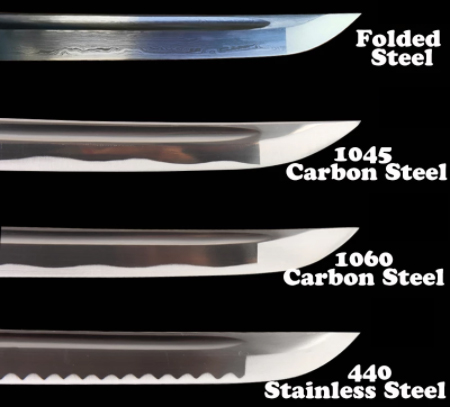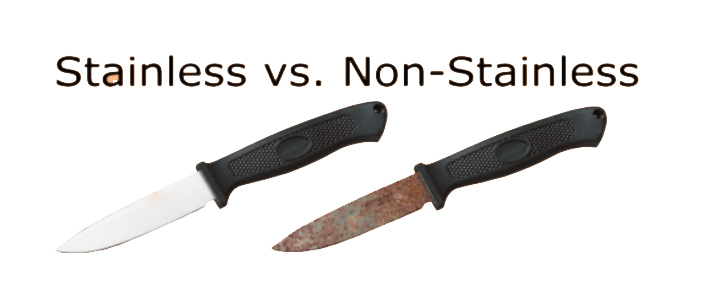Comparison of stainless steel and high carbon steel

One of the most influential factors that determine the quality of a sword is the metal used in its structure. For example, bronze and iron are relatively weak compared to steel. The steel sword provides excellent strength and durability. They are also better at holding swords than iron swords and bronze swords. However, with the invention of steel, this situation has changed.
Now, there are several different types of steel used in the production of swords, including stainless steel and high carbon steel. So what is the difference between these two metals blades and how does it affect the quality of the sword?

Stainless steel sword
The stainless steel sword is made of a steel alloy containing approximately 12% chromium. On the other hand, ordinary steel is mainly composed of iron and carbon and traces of other compounds.
The inclusion of chromium provides some key benefits, one of which is rust prevention. When iron is exposed to moisture-even a small amount of moisture in the air-it triggers a chemical reaction called "oxidation." If this process continues undisturbed, the iron will become a different iron oxide, or more commonly rust. Chromium prevents rust by forming a thin layer on the iron, which basically blocks moisture.
Stainless steel swords are also easier to sharpen because they contain chromium. However, the downside is that they are not as advantageous as their high-carbon counterparts.
The key problem with the stainless steel sword is that it can fail catastrophically. Although stainless steel is an ideal material for making short swords (or kitchen knives), it is too risky to make long swords (such as katana) from stainless steel.

High Carbon Sword
As the name suggests, high-carbon swords are made of steel-but the carbon concentration is higher than that of traditional stainless steel. By adding more carbon, it can make the blade harder and stronger. As the strength increases, the wear of the blade will also decrease. High-carbon steel swords can also maintain sharpness well. Today's Japanese swords are all made of high-carbon steel.
However, high-carbon swords provide little protection from rust. Therefore, if you plan to buy a high-carbon sword, be prepared to spend extra time and effort to maintain it. You need to carefully wipe the blade regularly to make sure that there is no moisture on it. Even fingerprint stains will leave enough moisture to cause oxidation and rust.
It is also worth noting that even stainless steel can rust. With or without chromium, all steel is prone to rust and corrosion because it contains iron. It is true that modern alloy steel is not as fast or prone to rust as simple carbon steel, but owners of modern steel swords, swords and products should be careful to prevent moisture.
Discover the many attractive options available for Katana swords and custom swords.
Want a unique sword? Feel free to contact us:
Phone: 086 13739276006
Email: [email protected]
Website: www.hanbonforge.com
Custom Sword Page: www.hanbonforge.com/CUSTOM-SWORDS/Custom-Your-Own-Swords

Leave a Comment